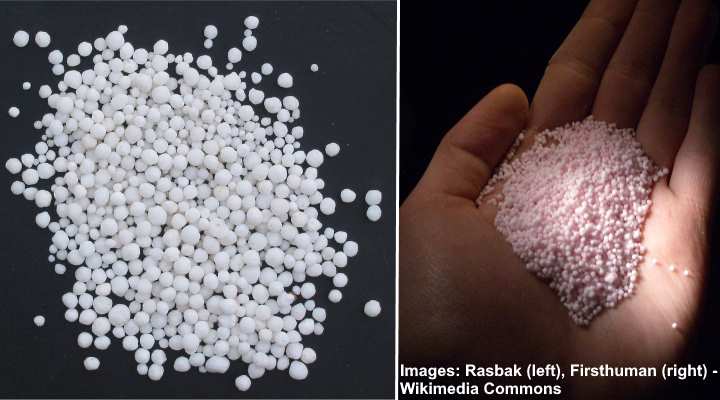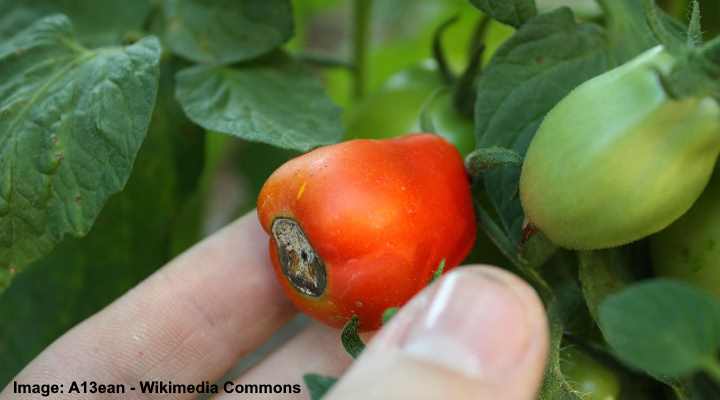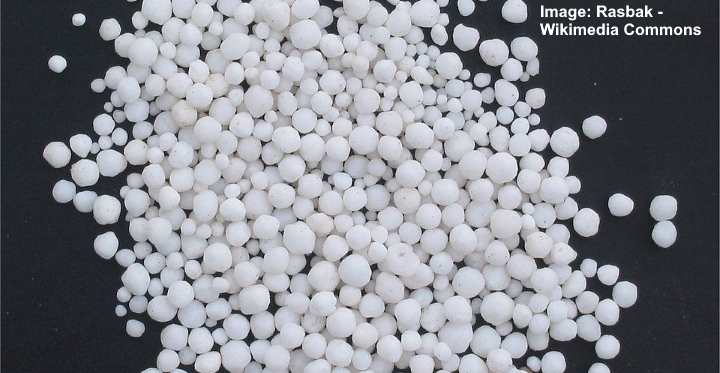Calcium nitrate fertilizer is used by plants to receive calcium and nitrogen from a water-soluble source. This fertilizer provides the necessary nutrients for plants to flourish and is also known as Calcium Ammonium Nitrate (CAN). Plants that have more robust fruit and are resistant to pests and disease are those that get the required quantity of nitrogen and calcium.
Calcium nitrate can be used as a foliar spray or soil fertilizer. This article will teach you how to fertilize your fruits and vegetables with calcium nitrate in order for them to develop properly.
What is Calcium Nitrate?

Calcium nitrate is a combination of calcium and ammonium nitrate, which contains nitrogen. It’s also known as Calcium Ammonium Nitrate (CAN). This chemical is utilized as a nitrogen fertilizer in agriculture and is also known as Calcium Ammonium Nitrate (CAN). Calcium nitrate improves the absorption of calcium, potassium, and magnesium from the soil by lowering soil acidity. Calcium nitrate is a good fertilizer because it helps to boost calcium and nitrogen levels in plants at the same time, promoting healthy development.
Before fertilizing plants, calcium nitrate fertilizer appears as fine, white to light gray particles that you mix with water. Many plant growth issues may be addressed with the use of calcium nitrate spray fertilizers. Nitrogen is a critical component for plant development, along with phosphorus and potassium. Since it assists plants to create robust leaves, buds, and fruit, calcium (Ca) is also required by them.
How is Calcium Nitrate Made?
To make a nitrogen fertilizer, calcium ammonium nitrate is produced using a chemical method. As a result, you can fertilize plants with odorless granules. You just need to mix two to four tablespoons of calcium nitrate with a gallon (3.8 l) of water and spray on the leaves to make calcium nitrate fertilizer for your garden. 15.5% ammonium nitrogen and 19% calcium nitrate fertilizer is made up of these elements.
Calcium nitrate has a 15.5-0-0 + 19% Calcium Nitrogen Phosphorus Potassium (NPK) ratio as a fertilizer. Calcium nitrate is an important spray fertilizer for improving plant nitrogen and calcium levels since it is the only water-soluble kind of calcium.
When to Use Calcium Nitrate Fertilizer
Pepper plants, tomatoes, and other greenhouse vegetables all benefit from calcium nitrate as a fertilizer. Plants that grow in water are fed the essential nutrients they need by adding calcium nitrate to their hydroponics “feeds.” Calcium ammonium nitrate solutions are beneficial for some flowering garden plants, such as roses and gerbera.
Because it helps plants grow properly, calcium is important for plant health. Calcium-deficient plants often have brown leaf tips and curled leaves. Calcium-deficient plants struggle to develop blossoms and produce fruit that is unappealing. Plants use nitrogen to photosynthesize and grow.
Plants that lack nitrogen grow slowly, have light-colored leaves and sparse foliage, and are frequently poor in nitrogen. Ammonium nitrate, on the other hand, can decrease the quantity of calcium absorbed by simply treating a nitrogen shortage.
To put it another way, excess nitrogen intake might lead to calcium deficiency. Calcium insufficiencies have been linked to reduced nitrogen absorption, according to certain scientific investigations.
Plants That Benefit from Calcium Nitrate Fertilizer
Most plants can be fertilized using calcium nitrate fertilizer sprays. Calcium and nitrogen nutrients are usually beneficial to fruit trees or vegetable plants. Apples, citrus trees, peppers, lettuce, eggplants, broccoli, and spinach are just a few of the examples.
Calcium nitrate fertilizer, according to one research, improved the quality and productivity of certain orange trees. Rose bushes grown in hydroponic gardens produced better flowers and stronger stems, according to the findings of other investigations on the benefits of calcium nitrate fertilizer. When calcium nitrate is used to fertilize gerbera plants, similar results are seen.
The Benefits of Calcium Nitrate Fertilizer
Fertilizing plants with calcium and nitrogen can encourage vigorous plant growth, healthy foliage, and better fruit. Nitrogen is critical for growing lush, green plants, according to the majority of gardeners. Ca calcium, on the other hand, is also important to encourage plant development and protect them from disease. Let’s take a closer look at how calcium nitrate can benefit garden and greenhouse plants.
Calcium Nitrate Helps Prevent Plant Disease
Calcium nitrate helps improve the calcium content of plants, making them stronger and healthier. Blossom end rot, cork spot, and bitter pits in apples can all be caused by calcium deficiencies in fruit-producing plants. Calcium nitrate can be used to prevent calcium-related growth problems by spraying it on tomato plants or apple tree leaves. Calcium nitrate may help prevent three common plant ailments:
Cork spot A calcium deficiency is the underlying cause of a prevalent apple tree disease. On apples, a cork spot appears as brownish dimples. Apples become infected with this fruit disease and have a bad appearance.
Bitter pits If there is a chronic calcium deficiency, develop in apples. Apple skin and flesh have black spots due to bitter pit. The bitter flavor of these apples is unpleasant.
Blossom end rot tomatoes, eggplants, peppers, and squash are just a few of the fruit-bearing plants that may be affected. Fruits and vegetables get a rotting black end as they age, making them inedible.
Calcium Nitrate Fertilizer Prevents Calcium Deficiency in Plants
Calcium deficiencies can be avoided by applying calcium nitrate to the soil or spraying on the leaves. Plants need calcium to grow properly, and it is a necessary mineral in the soil. Spraying calcium nitrate is more effective than adding calcium nitrate to the earth since it works quicker.
In sandy or coarser soils, which are often excessively acidic, calcium deficiency is prevalent. In addition, excess fertilizer application may diminish calcium in the earth. It’s also important to periodically increase the amount of calcium in the soil.
Calcium deficiencies are more likely to occur in certain plants. Heat stress, for example, may cause calcium depletion in tomatoes. Flowers drop early, curled leaves develop, and blossom end rot are all symptoms of this. Applying ammonium calcium nitrate as a foliar spray can help address the problem of cork spot or bitter pit if you have apple trees that show signs of a calcium deficiency.
Calcium Nitrate Helps Prevent Nitrogen Deficiency in Plants
One of the three essential nutrients for plant development is nitrogen. Slow growth, no new growth, yellowing leaves, and sparse foliage are all symptoms of nitrogen deficiencies in plants. In order to fill a nitrogen shortfall, you may add a nitrogen-rich fertilizer.
However, calcium nitrate fertilizer is more effective. Nitrogen overuse in the soil may prevent calcium uptake by plants. Despite the fact that your soil appears to be rich in calcium, plants could suffer because they can’t absorb enough of the nutrient. As a result, you can fix nitrogen problems without lowering calcium levels by using a calcium-rich fertilizer (NPK 15.5-0-0 + 19%).
How to Use Calcium Nitrate Fertilizer (Ammonium Calcium Nitrate)
Spray calcium nitrate on plant leaves is the best method for using it as a fertilizer. By adding calcium ammonium nitrate to the soil, you may fix calcium and nitrogen deficits; nonetheless, it takes too long to be effective. It’s a good idea to have your soil tested before treating plants in your greenhouse or garden for calcium deficiencies. To check calcium levels, the first step is to purchase a calcium (Ca2+) meter, such as this one.
To increase calcium and nitrogen levels, use calcium nitrate as a foliar spray. Mix 2 to 4 tablespoons of calcium nitrate with 1 gallon of water (3.8 l) at the beginning. To correct calcium deficiencies, fill a pressure spray bottle with the solution and liberally spray plant or tree leaves.
For every 100 ft. (30 m) length of vegetable rows, use about 1 lb. (0.45 kg) of dry fertilizer to use calcium nitrate in the soil. The calcium fertilizer should be applied to the root growing area. To help rectify calcium and nitrogen deficiencies, then water the area well. Avoid letting the powder contact wet foliage, as a word of caution.
Top tip to correct calcium deficiencies in individual plants: Any particular plant that shows signs of a calcium deficiency should be given about 1 level tablespoon of calcium nitrate in the soil.
The Signs of Calcium Deficiency in Plants
Just some symptoms of a calcium deficiency include poor foliage growth, lack of new leaves, dead buds, and dimpled fruit and vegetables. When there isn’t enough calcium in the soil, calcium deficiencies may occur. Calcium uptake is also affected by too much nitrogen, which results in calcium deficiency in plants. Your calcium-deficient plants may be exhibiting telltale symptoms. The following are a few points to consider:
Low calcium levels cause stunted or weak plant growth
Calcium-deficient plants may seem to be weak. Calcium insufficiency leads to tissue damage and death, causing poor growth. New leaves at the top of the plant are usually affected first, as you can see. Calcium-deficient plants often have sparse leaves and a shorter stature.
Lack of calcium damages leaves
Plants with a calcium deficiency frequently have crinkled new leaves. Brown margins and tips can be found on the newer leaves, which can begin to curl or develop. Leaf spots or even holes in the leaves can be caused by an injury to the leaves.
Calcium deficiency causes root damage
Roots expand and develop in order for the plant to obtain nutrients. Calcium is required. Roots become stunted and cease to grow if there is not enough calcium. Because essential nutrients can’t reach the leaves, buds, and fruit, stunted roots result in poor plant growth. Root rot diseases like Pythium can appear if the roots look brown and mushy.
Low calcium levels cause blossom end rot

Calcium shortage causes blossom end rot, which appears as a slimy black lesion on the blossom end of the fruit. Fruit becomes inedible or unappetizing as a result of this. Affected fruits are frequently smaller than they should be.
It is critical to get rid of sick fruit and apply the proper calcium nitrate dosage to the plant if you discover blossom end rot on fruit. Your plant should start producing healthy fruit if you spray the leaves to correct the calcium deficiency fast.
Bitter pits in apples

Bitter pits or blotchy cork in apples are a result of calcium deficiency. The skin and flesh of the apple have little black spots. Apples with leathery skin, a spongy texture, and a bitter taste are symptoms of this disease. Assume your apple trees produce bitter-pitged apples. If that is the case, apply a calcium nitrate foliar spray to the fruit tree as soon as possible in that case.
This year’s crop will not be saved by applying calcium nitrate to the soil. However, in February, you may add it to the soil to avoid bitter pit. Apply a 1/2 lb. (230 g) annual dosage of calcium nitrate to the tree’s growth. Before buds on the apple tree begin to develop, apply calcium deficiencies to the apple tree’s root area.
Where to Buy Calcium Nitrate
Calcium nitrate fertilizer (15.5-0-0 + 19%) is available at most garden centers and online retailers, like this one. Mixing white granular fertilizer with water to obtain the proper dosage is relatively inexpensive.
Other Ways to Add Calcium to Your Garden Soil
To boost soil calcium levels, you can add lime, gypsum, or wood ashes to the soil. Calcium deficiencies can be avoided by amendating the soil in the spring before planting. Use the foliar spray if you need a quick fix to your calcium-related growing problems during the growing season. Ways to increase the quantity of calcium in the soil include:
Agricultural Lime (Calcium carbonate)
For your greenhouse or garden soil, crushed limestone is the finest natural source of calcium. Most garden centers, as well as online retailers like Amazon, sell lime. You may use a soil test to figure out how much lime to apply to your vegetable garden or fruit trees.
When lime is used, keep in mind that it increases the pH of the soil, making it more alkaline. Yet, lime may be used to raise calcium levels in acidic, sandy soil if the pH is not optimum.
Dolomite Lime
If calcium soil lacks magnesium, dolomite lime may be useful in overcoming its deficiencies. Calcium carbonate and magnesium carbonate are combined to form dolomite lime. The pH levels of the ground are also raised by dolomite lime. As a result, it is impossible to say that it is suitable for every garden.
Gypsum (Calcium sulfate)
You may avoid altering the pH by adding gypsum to your soil if you have calcium deficiencies. In coastal regions, gypsum may also be used as a good soil additive to loosen clay and remove salt.
Wood ashes (Calcium carbonate)
Many nutrients beneficial for plant growth, such as calcium, are found in wood ash from burnt hardwood. Potassium, boron, and phosphorus are also added to soils by wood ash. Wood ash lacks the same amount of calcium as lime, which is one of its drawbacks.
Wood ash, on the other hand, makes your soil more alkaline. As a result, you may raise the pH level excessively in order to achieve the desired calcium boost.
